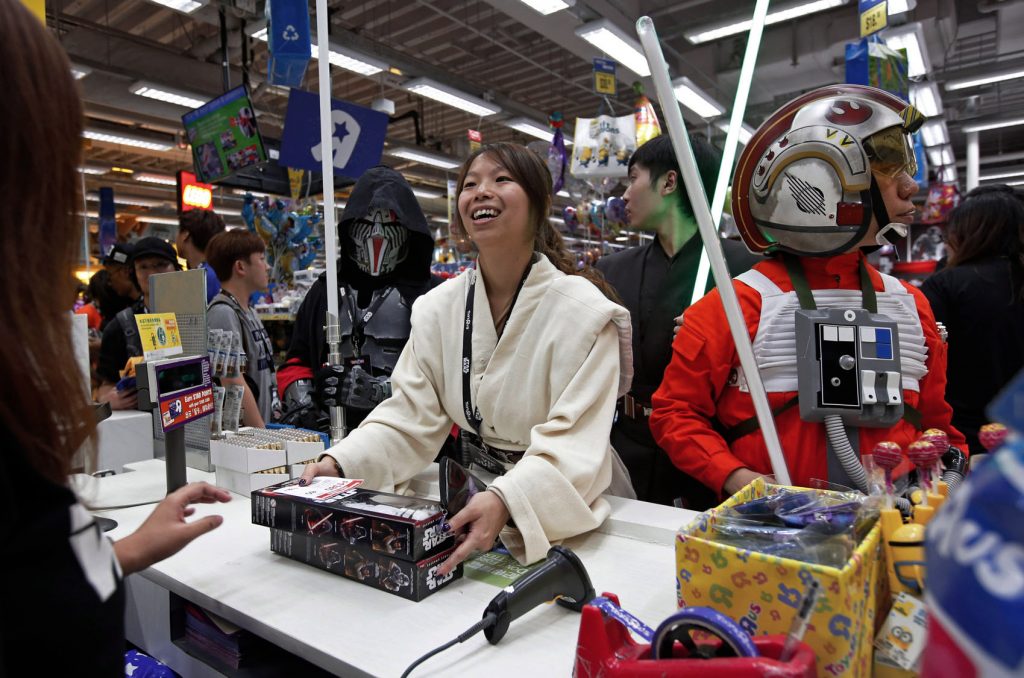When was the last time you bought something related to your favorite fandom?
You did not have to think too far, did you? This just goes to show how much ‘in’ and trending this fandom merchandise sector is getting.
Consider two lamps. Both provide light and also look the same. But if you stick a Harry Potter sticker to it, you will definitely be able to charge a few hundred bucks more for it. That’s the value of the brand. That is brand equity. It is the perception that people hold about your brands. According to Investopedia, companies can create brand equity for their products by making them “memorable, easily recognizable, and superior in quality and reliability”.
Why We Buy Wands
Any sort of pop merchandise gives you a sense of belonging to the respective fandom or to a certain extent that “world”. You want to flaunt your franchise. It has been going on for centuries. These products do have some sort of visible utility. But what about products which do not have any actual utility. Those are more like collectibles. What would I do with a wand? As hard as it is for me to admit, I have not yet received my Hogwarts letter and it is safe to say that I have reached a certain age, after which expecting a Hogwarts letter is quite foolish even for a hardcore fan like me. So why did I make my cousin from Australia buy me a wand worth 50 dollars? Freedom of choice. I have money thus I will spend it the way I like.
How the products appeal to your senses is also a factor here. Holding Captain America’s shield in your hands and being dazzled by its spark probably makes you feel invincible. The sharpness of the so called Valyrian Steel swords takes you back to the Battle of the Trident. Well, purpose served.
This habit of buying pop collectibles is just an extension of the age old phenomenon. The phenomenon of people buying things they don’t need but want. I don’t need a lightsaber to survive or fight a battle or complete my homework. I want one. To some extent, the advent of social media such as Instagram, Twitter and Tumblr may have aggravated this phenomenon. Let me tell you there are people vain enough to buy a pop collectible, only to strike a pose with it and post it on Instagram.
The advent of social media and streaming websites has opened more doors of opportunity for fandom shopping. Netizens form a big part of this sector. Comic cons have also boosted the sales of this sector. Shows like Game of Thrones have reached unprecedented levels of popularity. When shows based on books are a hit, the demand for the books also increase.
Who Wands and Lightsabers are Sold to
Most of these fandom purchases are conducted online. People do not have to rely on foreign sites for such purchases anymore. There are local online shops which now sell a wide range of pop culture and fandom merchandise. There are stores, both physical and online which sell a wide range of merchandise starting from key chains to cloaks. The market is growing both in terms of size and awareness. The target market is composed mainly of 15–30 year olds and some people above 30 who might buy suck products for their children or for themselves when nostalgia hits. The youth are more inclined to try out new products and set new trends.
The target market itself is a big advantage for the industry. Pop culture refers to objects, practices, etc that gain popularity among the masses at a particular time. The target market comprises of people who are most likely to watch new shows and movies and experiment with various products.
This pop merchandise sector is here to stay and it will grow bigger and bigger as more content through television, e-books, YouTube, streaming channels come up. We will fall prey to this. (!) Whom am I kidding? I got myself a Ministry of Magic ID a few weeks ago. I gotta go and practice my flushing.
